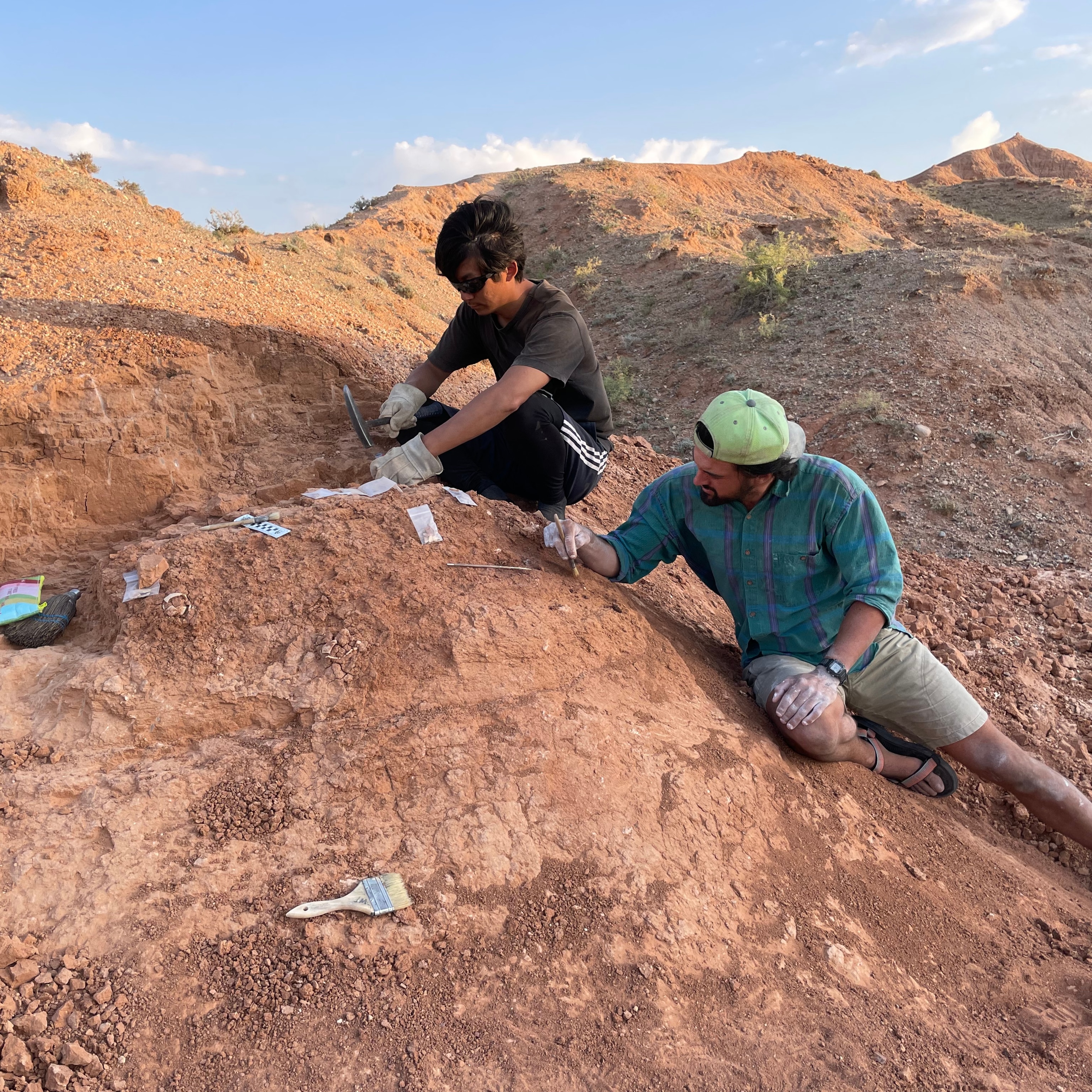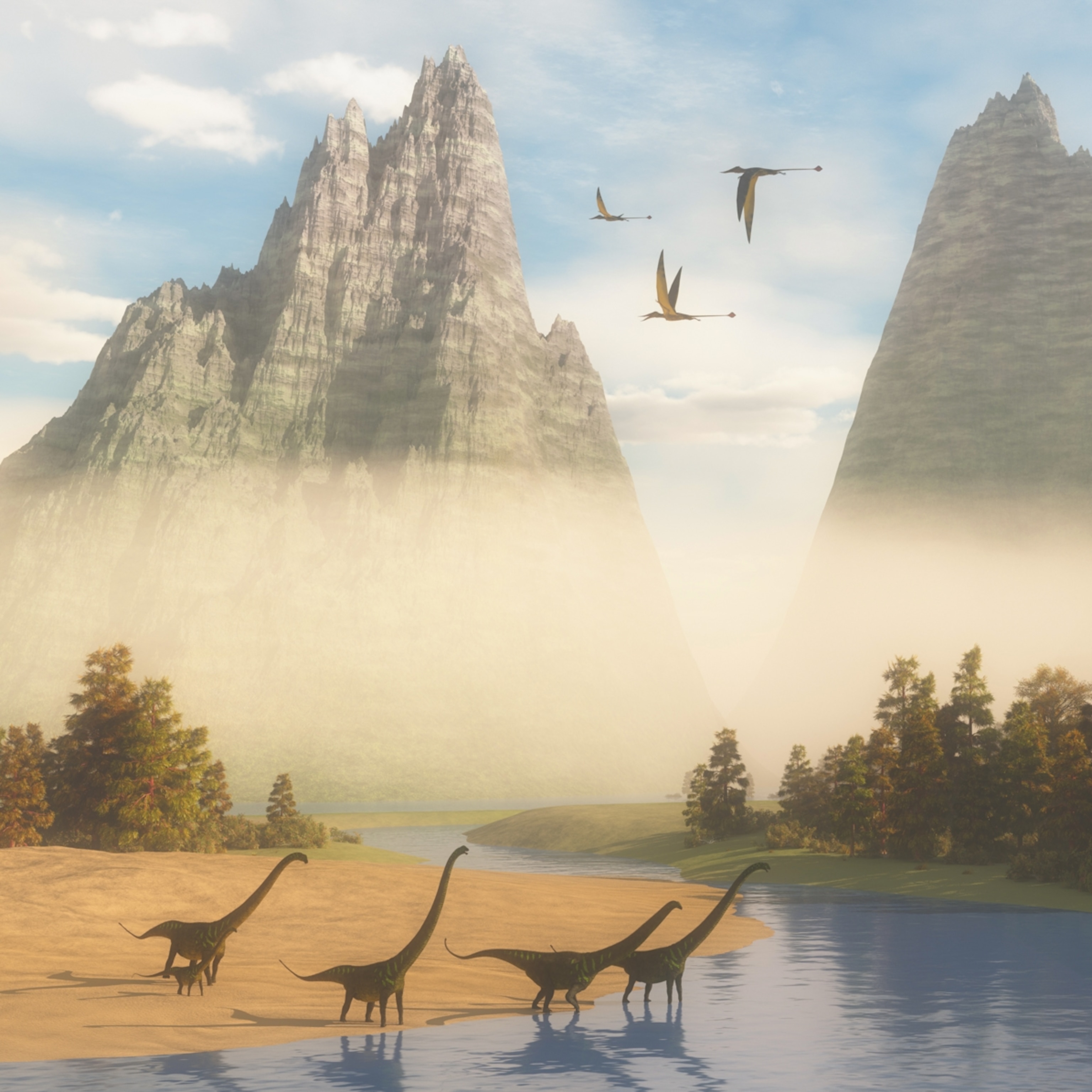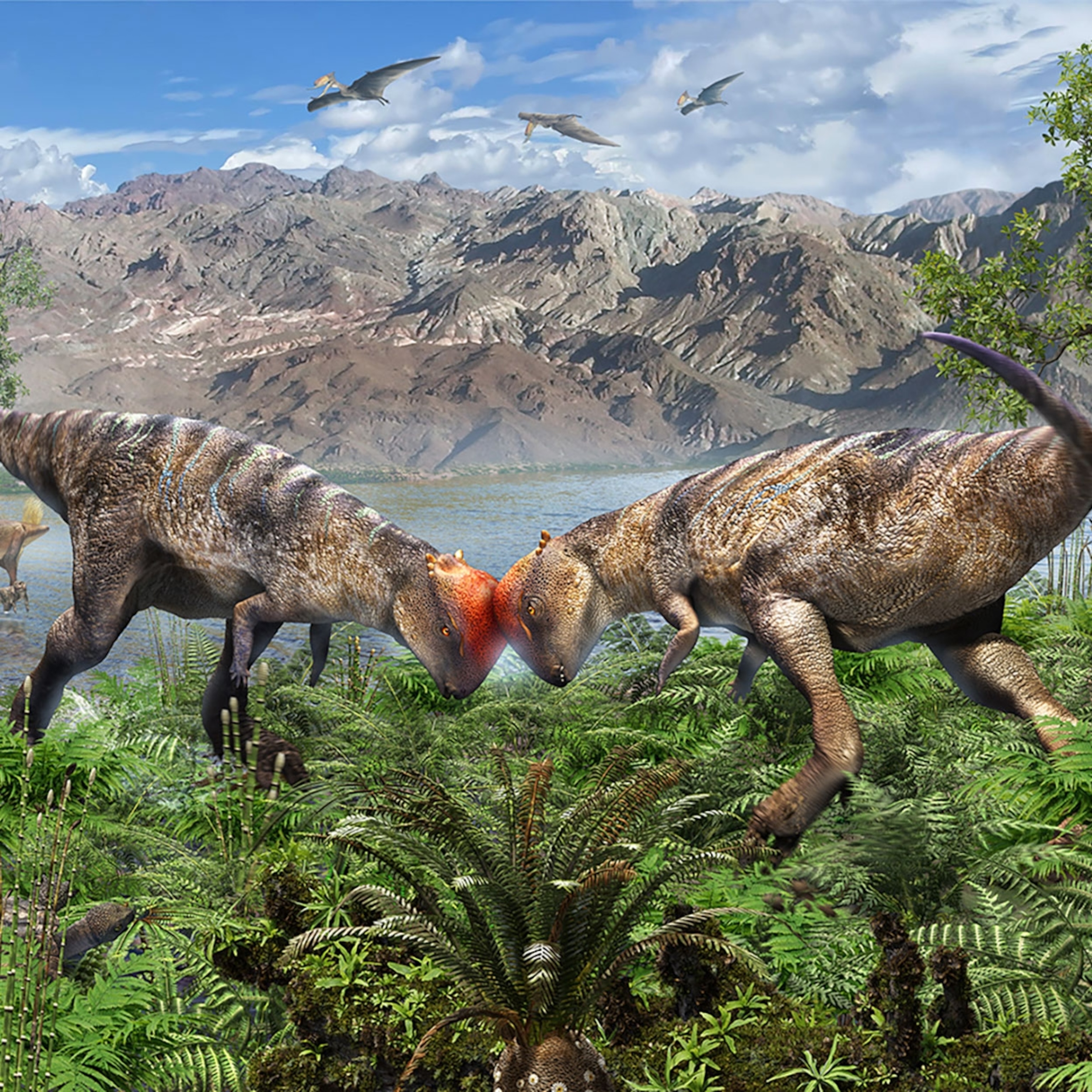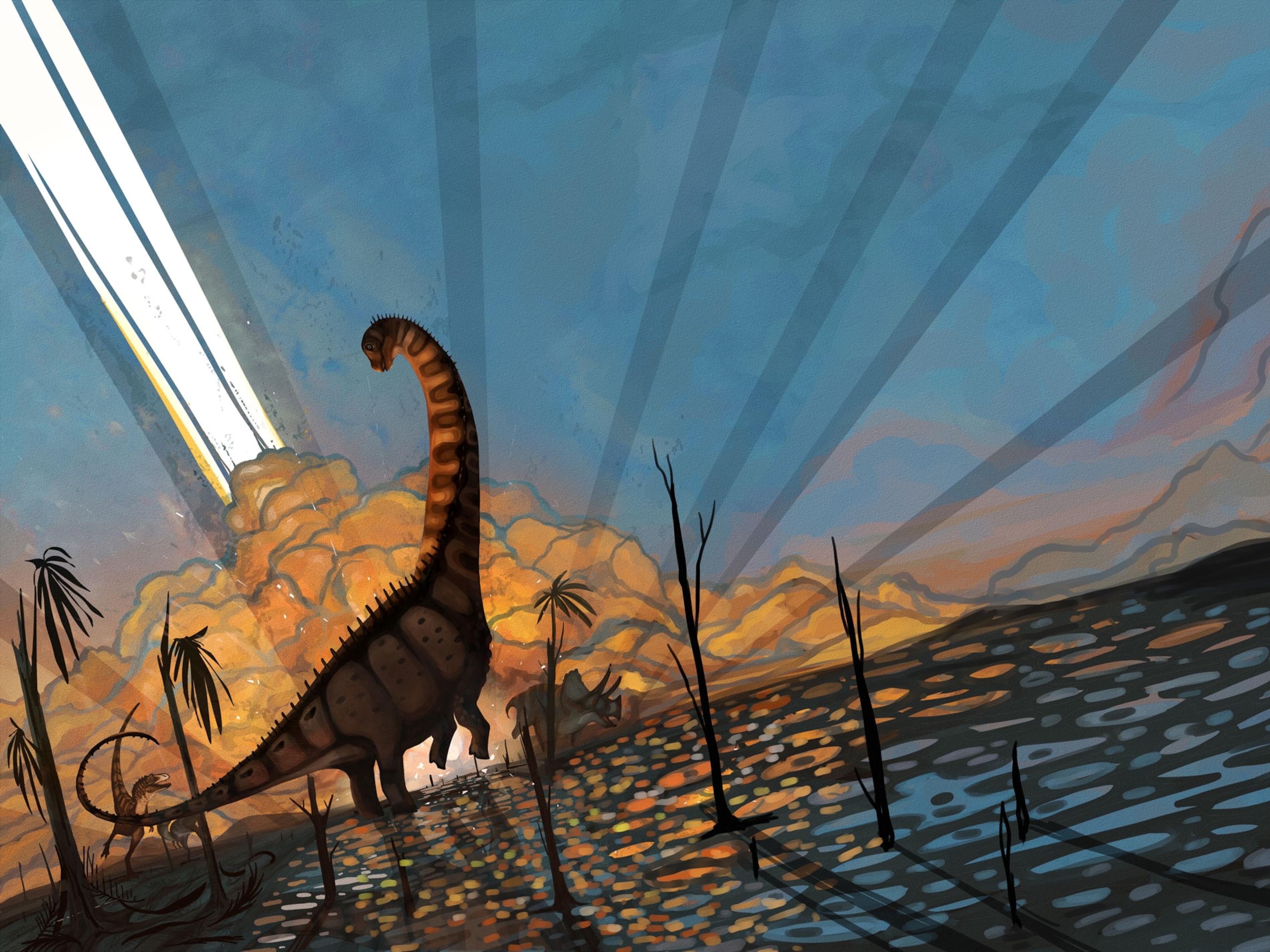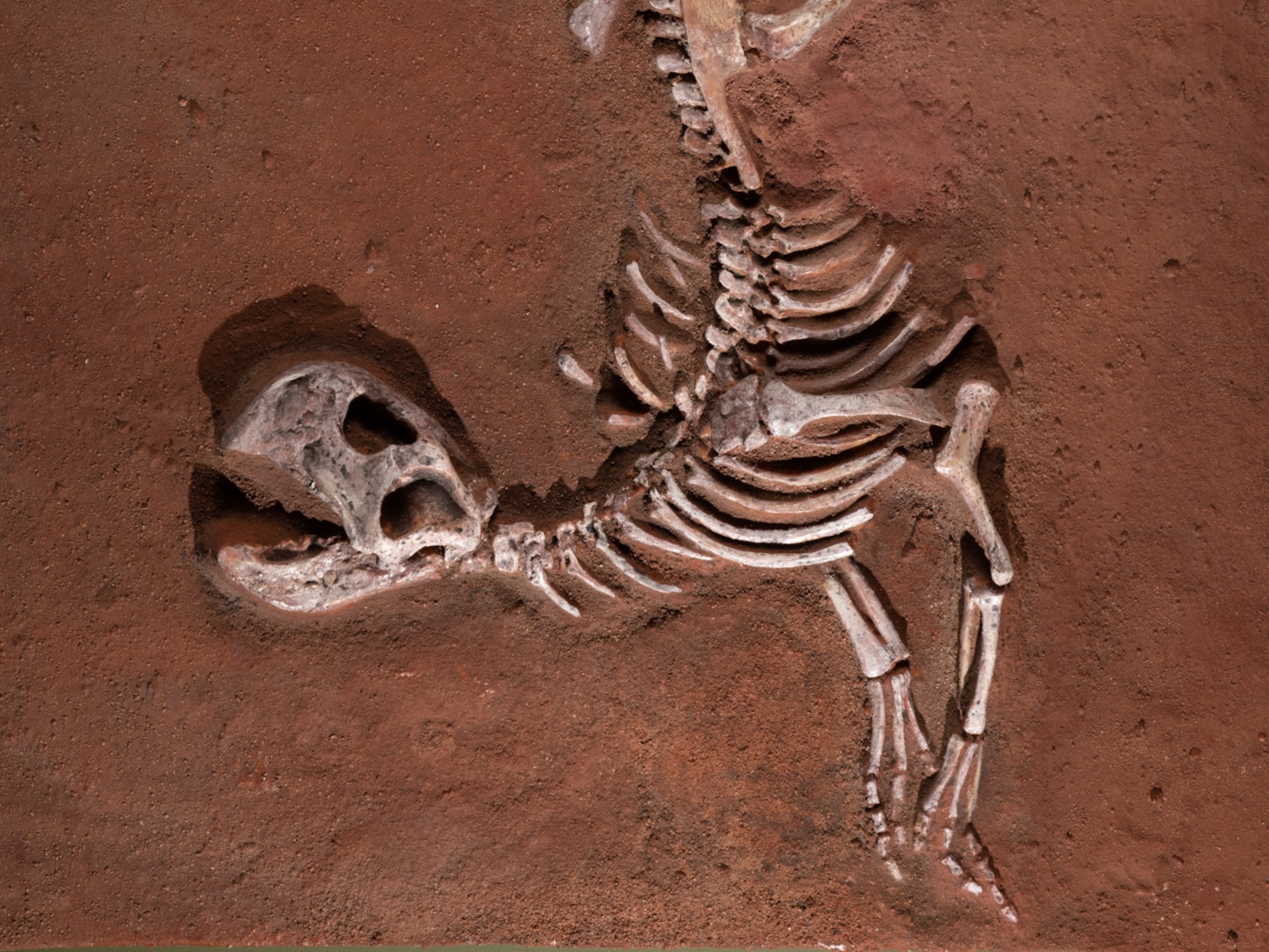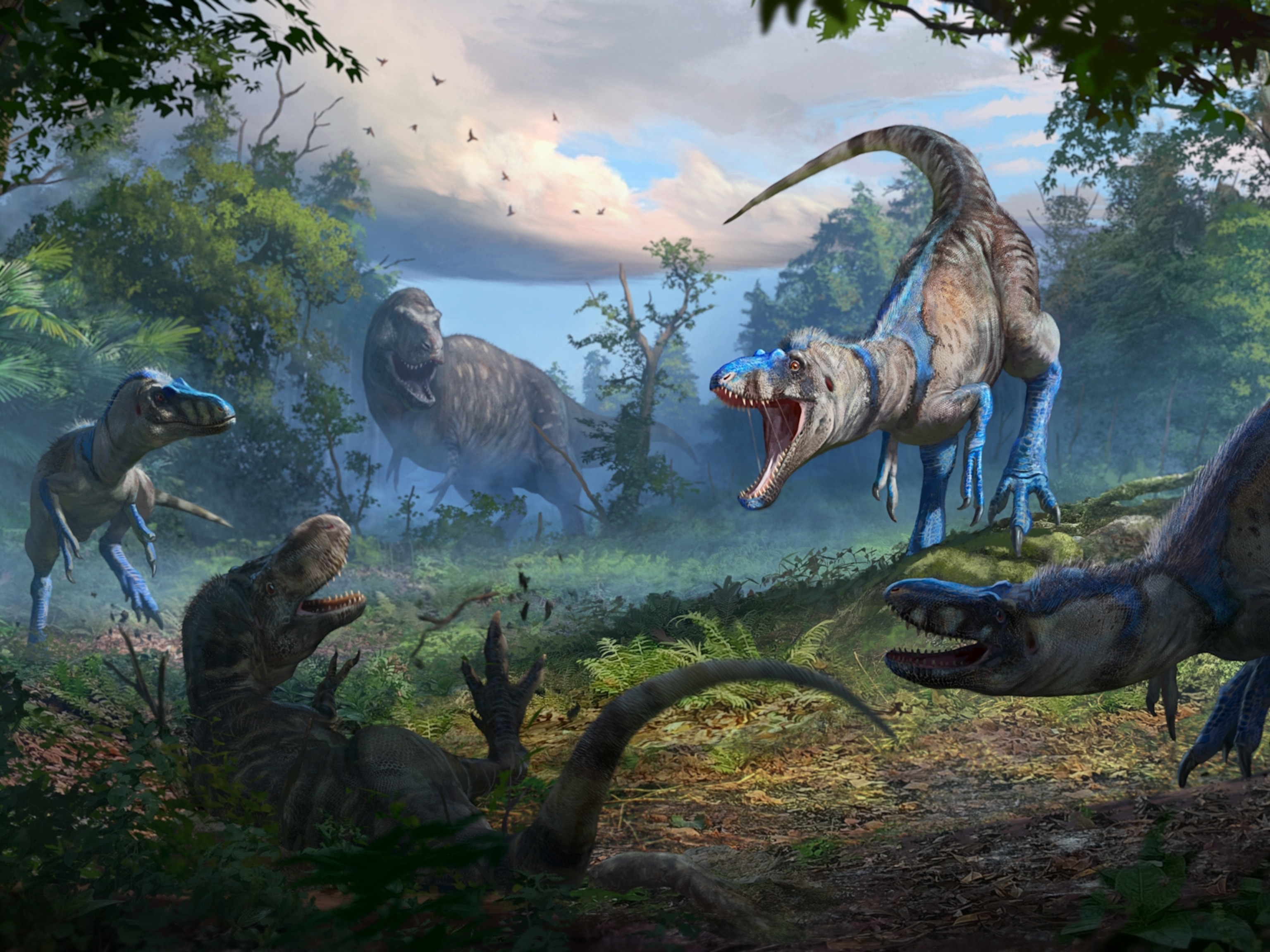Since the time of Aristotle, humans have stood amazed by birds' dazzlingly colorful eggs, which range from creamy hues to the deepest reds, blues, and greens. But long before our love of robin's-egg blue, nature may well have given us Velociraptor's-egg blue. After all, modern birds inherited their knack for vibrant eggshells from their dinosaur ancestors, which first gained the trait more than 145 million years ago, according to a recent study published in the journal Nature.
The result adds new color to our understanding of dinosaur reproduction. It may also leave you wondering: How did these dinosaurs hatch their eggs and rear their young in the first place? And in light of the latest fossils, what can we learn about dinosaur parenting from today's birds—the last living dinosaurs?
Invest in the future
With each new find, it becomes clearer that modern birds got many of their iconic traits from their dinosaur ancestors. Feathers, for instance, have popped up thousands of times in the fossil record since the 1990s. And just a few weeks ago, researchers unveiled what seem to be fossilized lungs in an early type of bird that lived 120 million years ago. That Cretaceous fossil suggests that hyper-efficient lungs adapted for flight emerged in the bird family tree far earlier than previously thought.
Such birdlike traits arose within the eumaniraptorans, the dinosaur group that includes modern birds, theropod dinosaurs such as Velociraptor and Deinonychus, and nonavian feathered dinosaurs. During the late Jurassic, these animals seem to have diversified rapidly. University of Texas at Austin paleontologist Julia Clarke has speculated that as this radiation kicked into gear, eumaniraptorans evolved a higher metabolism. And during this metabolic shift—or even perhaps because of it—eumaniraptorans became quite the invested parents.
Some dinosaur groups, such as the long-necked sauropods, laid small eggs en masse and buried them, leaving them behind like sea turtles. Eumaniraptorans' eggs, however, are relatively bigger and were laid only a few at a time. In some fossil egg clusters, the eggs are visibly paired off—a sign that they were laid more slowly. And in 2005, researchers unveiled the pelvis of a eumaniraptoran that contained two shelled eggs.
Unlike other dinosaurs' eggs, eumaniraptoran eggs didn't have that many pores, a sign that the eggs were kept in open, more birdlike nests. Perhaps, like many birds, the animals brooded their eggs to keep them warm; some fossilized egg clusters even preserve adult dinosaurs sitting atop them. And analyses of some dinosaur embryos suggests that these eggs took about ten weeks to incubate—faster than living reptiles, but slower than modern birds.
A rainbow connection
Because their eggs were exposed, eumaniraptorans may have had good reason to color them with hues and speckles, as revealed by the newest Nature paper. Unlike humans, which have three types of light-sensitive cells in their eyes, birds and dinosaurs had four and so would have perceived color differently from us. In particular, their eyes would have seen calcite, the white mineral that makes up eggshell, in a whole other light.
“To a bird or to a dinosaur, a non-pigmented white egg would look glowing pink,” says paleontologist Jasmina Wiemann, a Ph.D. student at Yale University and lead author of the Nature paper. “If we think of a nest predator, whenever he or she sees glowing pink eggs at the ground, it's like—this is lunch. Once dinosaurs started to incorporate these pigments, this glowing pink of the eggshell basically disappears.”

As Wiemann and her colleagues show, the dinosaur Deinonychus probably had blue eggs like today's emus, while other species had whitish, speckled eggs like today's sparrows. (Read more about the first known dinosaur with colorful eggs.)
“It seems that nonavian dinosaur eggshells had a diversity of egg color that pretty much equals what we see in modern bird eggs,” Wiemann says. “They come in all sorts of colors, with or without spots.”
The new evidence makes a lot of sense if these dinosaurs did indeed lay their eggs in open nests, says Montana State University paleontologist David Varricchio. If you're burying your eggs, why invest the extra energy to color them?
“It’s nice to have that confirmation from an unexpected source,” he says.
Fossil Pictures Capture the Mystery and Beauty of Dinosaurs
The Jurassic Park guide to parenting
Researchers still have a long way to go to figure out the details of dinosaurs' parenting styles once the eggs have hatched. Case in point: the eumaniraptoran Deinonychus, a long-clawed North American carnivore that lived between 100 and 120 million years ago. Deinonychus is often found alongside the plant-eating dinosaur Tenontosaurus, and there's solid evidence of the former nibbling on the latter. But the two animals were very different sizes: Deinonychus weighed about 200 pounds, while Tenontosaurus could weigh a couple of tons. How did Deinonychus hunt such a large animal?
In the 1960s, paleontologist John Ostrom suggested that the creatures hunted Tenontosaurus in packs, like wolves. Ever since, the idea has spread like wildfire, gaining notoriety in the first Jurassic Park movie.
“That has been the go-to hypothesis for 40 years, and it's been depicted in popular culture over and over,” says Joe Frederickson, a paleontologist at Southwestern Oklahoma State University. “But the fact is, there's very little evidence that supports that.”
Whether Deinonychus was a pack-hunting “clever girl” would directly shape at least one aspect of its parenting. Modern wolves share their kills with their young, and as the pack eats, there's only a low risk of a wolf pup becoming a meal itself. But in 2007, two researchers suggested that Deinonychus ate more like today's Komodo dragons. Under this model, adults would barely tolerate each other at a shared meal and would more opportunistically cannibalize their young. As a result, juveniles would avoid the adults and scrounge up their own meals.
To test which model better fit Deinonychus, Frederickson chemically tested small and large Deinonychus teeth from sites in Montana and Oklahoma, using tooth size as a loose proxy for the dinosaurs' ages. At the Society of Vertebrate Paleontology's recent annual meeting, Frederickson announced that larger Deinonychus were eating different foods from the smaller ones—a clue that the dinosaurs might not have been pack hunters after all.
However, that doesn't necessarily mean Deinonychus treated its young the way Komodo dragons treat their own, Frederickson says. After all, in some living birds, hatched chicks follow their fathers around for protection, but they still find their own food.
To keep piecing together the puzzle, Wiemann wants to sample more fossil eggshells, especially from large-bodied theropods such as T. rex or Spinosaurus. She also wants to study living birds in greater detail, to see whether subtle patterns or colors correlate to specific types of nesting or parental care.
“Once we have solid data from modern birds, our only surviving dinosaurs, we can easily apply it to nonavian dinosaurs,” Wiemann says. “That will help us better understand why dinosaurs became the incredibly successful group that they were—and that they still are today.”


